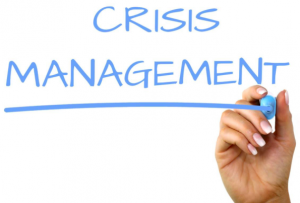Crisis Communications from the Inside-Out: Top Five Tips to Begin Your Crisis Management Career

By virtue of the job, public relations professionals are familiar with high-stress environments and, generally speaking, comfortable with think-on-your-feet situations.
Crisis and conflict exist for every company, organization or entity; no one is immune to it. Whether a disaster impacts your company or an organizational issue disrupts your workplace’s ability to function as it should, well mapped out communication strategies should be structured to embrace the nuances of internal and external audiences.
Often, communication professionals think first about the message as it would play out in the press, on social media or in a sound bite. However, sometimes forgotten audiences include the employees, staffers and front-line workers who also have to work within an organization facing a crisis. Whether you’re looking to kick-start a career in crisis communications or want to amplify your current role, here are five key communication elements to consider when working with an organization’s internal audience during times of crisis and/or conflict.
- Engage in active listening. Before an organization can begin to brainstorm solutions for a conflict or crisis, they must understand the issue and its impact. Go beyond examining the verbal message but also take into account a process of active listening and analyzing non-verbal communication of those within the walls of the organization. We often receive messages while simultaneously preparing a response. This action limits the receiver’s ability to truly engage the speaker and identify the underlying meaning in their message. Active listening provides the opportunity to participate in the message being presented and validates the speaker’s thoughts and positions, ultimately building trust.
- Read non-verbal cues. Being able to read non-verbal signals is vital in de-escalating conflict. Body language provides insight into the true meaning and intent of the message as well as an immediate assessment of the receiver’s reaction. If the employee is delivering a message with negative body language the receiver can use active listening to unpack the message and reassure the speaker that they are being heard.
- Participate in reflective dialogue. Managing the multiple perspectives of group members is a challenge under normal circumstances; adding in the element of conflict can create tension. In the process of managing or resolving conflict, stakeholders must look at the causes that led to the crisis or conflict to ensure that procedures are put in place to avoid reoccurrence of the issue. Through reflective dialogue, blame is transformed creating a less defensive and more solution-oriented situation. Once team members are aware of the favorable climate they can focus on collaborating and creating shared common goals that can increase organizational success.
- Examine solutions together. Conflict, regardless of its cause, provides individuals with the opportunity to examine solutions that promote organizational innovation. By reframing conflict in a more productive view, individuals will move from the negative stigma of conflict to embrace the possibilities that can emerge when striving to resolve a dispute. Integrating solutions to emerge from the organizational strife or crisis requires a strategic plan that identifies the key players and the internal and external modes of communication that are essential to the effectiveness of the conflict’s resolution. Being able to deliver the plan strategically will decrease an organization’s stress that is often associated with conflict, crisis and change.
- Learn. Learn. To be the very best crisis management professional you must never stop learning – about your industry, best practices, case studies and the ever-evolving world around you. By regularly engaging in professional development, hands-on workshops, continuing education and certificate programs, you stay ahead of the curve (and quite possibly a potential crisis). Your constant learning and ability to spot new trends, identify risks early on and establish new communication opportunities will give you the ability to thrive as a crisis communication professional and bring out the best in your team during a crisis.
–
Heather Bermudez is an instructor at Florida International University (FIU) teaching at the undergraduate level and within the Global Strategic Communications master’s program. She has been an active PRSA member since 2007 and currently serves as the Ethics Committee Chair for the PRSA Miami chapter. Heather is passionate about communications and is committed to providing students with hands-on, real-world experiences both in and out of the classroom bringing them closer to their field and communities – so much so, that she is also the co-faculty director of BOLD, FIU’s student-run strategic communications agency.
Aileen Izquierdo is an instructor and graduate director of the Global Strategic Communications master’s degree program for both the online and on-campus tracks at FIU. She is a communication professional with more than 20 years of strategic communications, branding and crisis communications experience, having held executive, management positions as vice president for communications at Broward College and Florida Atlantic University. Aileen was the first vice president for communications and marketing at both of these institutions. She also was the first Hispanic vice president in FAU’s history. The South Florida Business Journal named Aileen a Heavy Hitter in Public Relations. Additionally, her contributions to higher education were recognized in, “Legacy makers: 100 Women of Distinction at Florida Atlantic University.”
Dr. Raquel Perez is an instructor at FIU and conflict resolution consultant with more than a decade of professional experience in leadership development and organizational design. She holds a doctorate and masters in Conflict Analysis and Resolution and a B.A. in Organizational Leadership and Communication. In addition to her work in academia, Dr. Perez has led de-escalation trainings for law enforcement agencies and has collaborated on projects that focused on organizational conflict, change management, learning systems, grassroots movements, talent optimization, and global engagement. Her research interests are communication, conflict and critical thinking.
